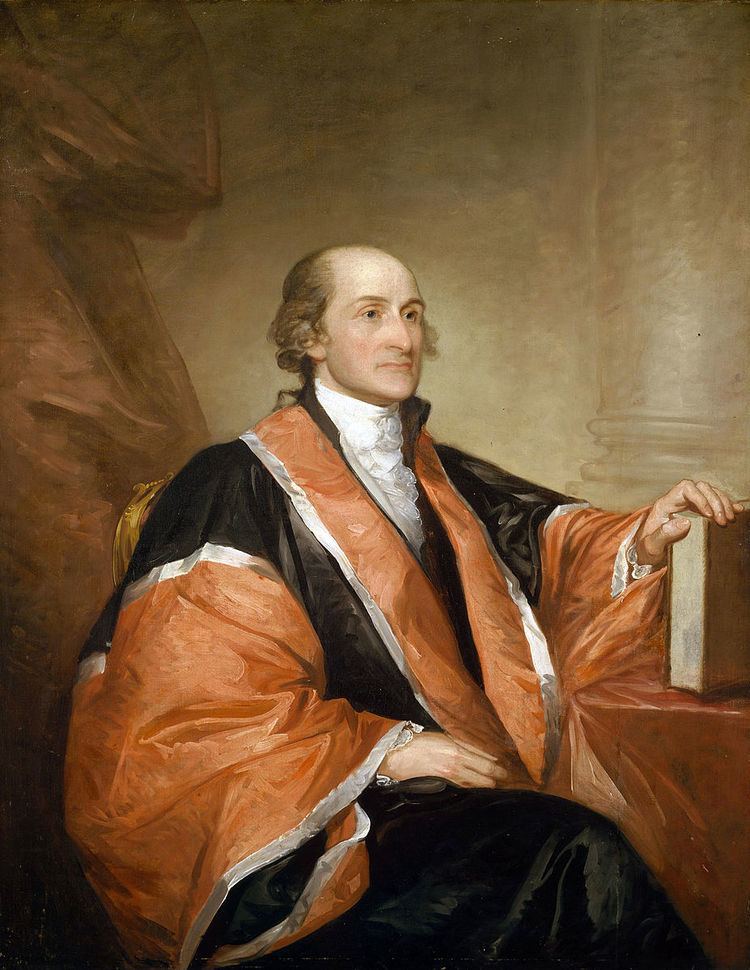Established 1789 Country United States | Dissolved 1795 No. of positions 6 | |
 | ||
Location Old City HallPhiladelphia, PA | ||
The Jay Court refers to the Supreme Court of the United States from 1789 to 1795, when John Jay served as the first Chief Justice of the United States. Jay served as Chief Justice until his resignation, at which point John Rutledge took office as a recess appointment. The Supreme Court was established in Article III of the United States Constitution, but the workings of the federal court system were largely laid out by the Judiciary Act of 1789, which set the size of the Supreme Court at six seats. The court had its first public session in February 1790, but did not decide its first case until 1791. The court met first in New York City, but moved with the rest of the federal government to Philadelphia in 1791. In addition to their duties as a court, each justice spent much of his time riding circuit outside of the capital. The court decided relatively few cases, and perhaps the most important legacy of the court was its refusal to issue an advisory opinion sought by President George Washington, establishing a precedent that the court only hears cases and controversies. The relative unimportance of the Supreme Court at this time is perhaps best exemplified by the fact that Jay, the sitting Chief Justice, traveled to the United Kingdom in 1794 to negotiate the Jay Treaty for the Washington Administration.
Contents
Membership
The Jay Court began in 1789 when President George Washington appointed Jay and four Associate Justices: John Rutledge, William Cushing, James Wilson, and John Blair, Jr.; James Iredell was appointed in 1790, filling the last vacant seat. Rutledge resigned in 1791 and was replaced by Thomas Johnson, who resigned in 1793. Johnson was replaced by William Paterson. The justices represented every region of the country, as Washington emphasized geographical balance in making his appointments. The Jay Court ended in 1795, when Jay resigned to become Governor of New York. Jay was replaced via recess appointment by John Rutledge, though Rutledge was denied confirmation by the Senate. Oliver Ellsworth became the third Chief Justice in 1796.
Chief Justice Associate Justice
Rulings of the Court
The Jay Court did not issue many major rulings, but Chisholm v. Georgia (1793) stands as the first important ruling of the Supreme Court. The court held that the state of Georgia could be sued in federal court, establishing an important precedent that the states of the union do not constitute fully sovereign states. However, the Eleventh Amendent, ratified in 1795, granted states sovereign immunity from suits in federal court by citizens of another state.
